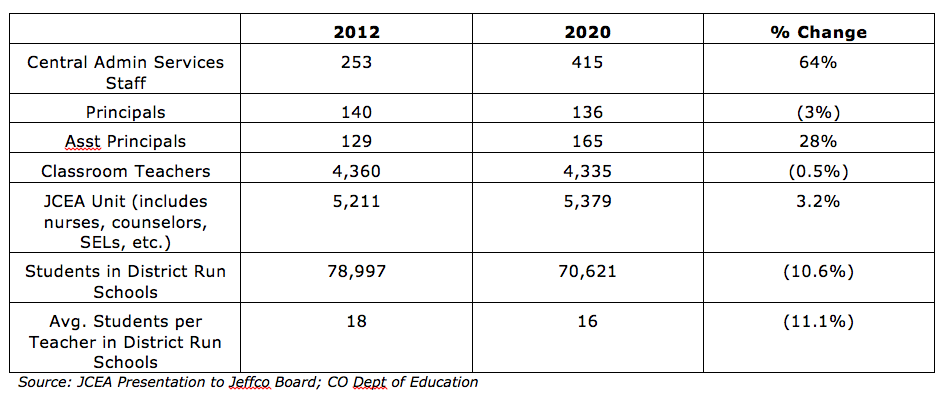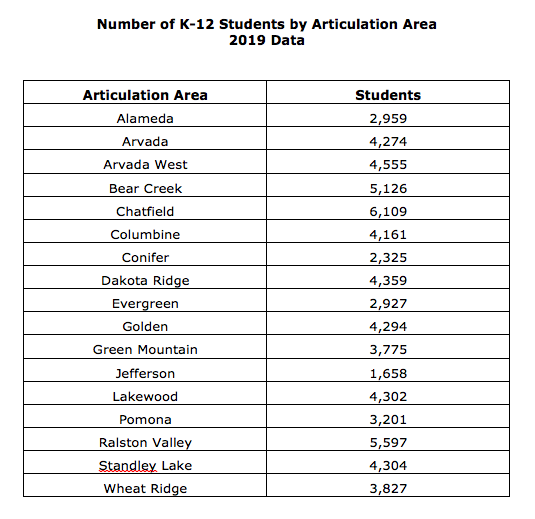After kicking the can down the road for too many years, rapidly mounting financial pressures are now forcing Jeffco to close and consolidate schools.
Declining enrollment and rising staff costs have put tremendous pressure on Jeffco's finances — to the point that during the next fiscal year we will have to draw down about $30 million in our reserves (savings) to cover our costs.
With federal COVID aid running out, and student enrollment and its associated revenue continuing to decline, we cannot continue on this path. School closures and consolidations can no longer be avoided.
As such, our community is about to embark on an arduous decision process.
I am a strong believer that good decisions result from processes that include both analysis and intuition. More specifically, research has found that the most effective decision processes first reach conclusions on the basis of evidence and logic, and then check them against intuition. When the two differ, it is important to go back and see what would have to change to get your analysis and intuition to align.
For this reason, in this section of my website, I have collected a wide range of information to enable community members to better understand the problems we face, and reach conclusions about what we must do to solve them.
Let's begin by looking at how district staffing and enrollment levels changed between 2012 and 2020. As you can see, they've gone in opposite directions, which (along with substantial pay raises over time) has placed growing pressure on the district's budget.

Jeffco's latest Facility Conditions Report shows the very low level of capacity utilization at many district schools. Note that the industry standard for low school capacity utilization is 80%. Jeffco has 57 schools at or below 65%.
Jeffco's latest Enrollment Projections Report forecasts continued declines at many schools. Part of this is due to declining birth rates. But it is also due to more families choicing their children out of district-run Jeffco schools, and fewer families choicing into them. The district lacks a strong understanding of why this is happening — e.g., is it because Jeffco's district-run schools lacks programs (e.g., in music, theater, the arts, athletics, CTE, STEM, or other areas) that other schools and districts offer? Or is it because Jeffco's academic performance has been declining?
Regarding the latter, I've compiled this detailed report on the academic performance of the schools in each of Jeffco's 17 Articulation Areas.
It also contains school-by-school data on the number and percentage of teachers who use more than 10 personal and sick days per year. The data come from the US Department of Education's Office of Civil Rights, which has collected teacher absence data every two years since 2009 (results are reported with a three year lag). Their research has found that when a teacher is chronically absent from the classroom for more than 10 days, it has a significant negative effect on student achievement results. OCR has been concerned that higher rates of teacher absenteeism at schools with a high percentage of at-risk students is a source of systematic inequity. Research on teacher absences and student achievement can be found here, here, here, here, and here.
For Jeffco overall, the percentage of teachers who were chronically absent was 25.7% in 2011; 29.8% in 2013; 22.3% in 2015; and 24.5% in 2017. One way we can improve student achievement (and recover COVID learning losses) is to better understand and address the root causes of these high rates of chronic teacher absenteeism, so that we can substantially reduce them. Doing so will also reduce the district's demand for substitute teachers, and relieve pressure on our budget.
The district has also created this very detailed report on staffing and costs at every Jeffco elementary school (they intend to later do the same analysis our middle and high schools).
Finally, the following table shows you the varying number of students in each of Jeffco's 17 Articulation Areas. Given this, it is worth asking whether we still need 17 of them.
